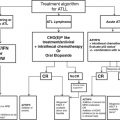Fig. 1
Distribution of gynaecological malignancies at Ibadan, Nigeria (Adapted with permission from Odukogbe et al. [4])
2 Epidemiology
Published rates of the diseases differ worldwide, being high in Asia, intermediate in Africa and lowest in the United States (USA) and Europe (Table 1). The reasons for these differences are not yet fully known but may be related to collection and interpretation of data [17]. The risk of molar pregnancy has been related to the woman’s obstetric history through prior incidence of abortions – both spontaneous and induced – and to previous hydatidiform mole [18]. Women at the extremes of their reproductive lives have been shown to be at increased risk of having GTDs. A study documented the relative risks as follows: women aged 21–35 years (RR = 1.0), teenage women (RR = 1.9), those aged 36–40 years (RR = 1.9) and those above 40 years (RR = 7.5) [19]. Linkages to advanced paternal age lend credence to the possibility of defects in gametogenesis as an aetiological factor [19]. Other factors implicated are nutritional deficiencies [20] and prolonged use of oral contraceptive pills (OCPs) [21]. This risk from OCP use however forms a very low proportion of the diseases and does not merit advising against use of the pills, especially in poor, overpopulated countries and because of the protection from ovarian and endometrial cancers.
Table 1
Distribution of GTDs in regions of the world
Location | Molar pregnancies/1,000 pregnancies | GTNsb | Author/s, date | ||
|---|---|---|---|---|---|
All molar | Complete | Partial | |||
Worldwide | – | 0.5–2.5 | – | – | Bracken, 1987 [6] |
Japan | 1.92 | – | – | – | Ishizuka, 1976 [7] |
Venezuela | – | – | – | 0.70a | Corté-Charry et al, 2006 [8] |
Malaysia | 2.8a | – | – | 1.59a | Sivanesaratnam, 2003 [9] |
Nigeria | 0.82–4.88a | – | – | – | Hendrickse et al, 1964 [10] Ayangade, 1979 [11] Ogunbode, 1978 [12] Egwuatu and Ozumba, 1989 [13] |
Europe/USA | 0.6–1.1 | 0.33 | – | – | Palmer, 1994 [14] Smith and Smith, 2003 [15] |
Ireland | – | 0.51 | 1.44 | – | Jeffers et al, 1993 [16] |
Turkey | 10.6a | – | – | 12.9a | Gül et al, 1997 [5] |
3 Disease Types
3.1 Hydatidiform Mole
Recent genetic researches have confirmed this to arise from defects of fertilisation leading to the formation of diploid, triploid or very rarely tetraploid chromosomes. The two varieties share histological and clinical characteristics and may be indistinguishable by these means in early cases, but differentiation is made possible through genotyping and chromosome in situ hybridisation [1, 22]. Although both are benign, about 10–20 % of cases will develop malignant change requiring chemotherapy [15, 23], the complete type with higher propensity than the partial variety [1]. The distinguishing features are shown in Table 2.
Table 2
The distinguishing features of the disease
Feature | Complete mole | Partial mole |
|---|---|---|
Cytotrophoblast Syncytiotrophoblast | Generalised, diffuse hyperplasia of both | Focal and minimal hyperplasia |
Chorionic villi and central cistern formation | Generalised oedema | Focal oedema |
Fetal parts | Absent | Present. Occasionally to term |
Chromosomal constitution | Diandric diploidy (duplication of paternal DNA). 95 % are 46XX, 5 % 46XY | Maternal and paternal chromosomes. 90 % are 69XXY (23,X and 23,X;23,Y) |
Ratio | 2.8 | 1.0 |
Characteristic ultrasound scan picture | Common, ‘snow storm’ appearance | Rare |
Malignant change | 6–32 %, 33 % of these are metastatic | 0.5–3 %. Non-metastatic |
Most patients present with vaginal bleeding after a period of amenorrhea. This occurs in about 84 % of cases [24] usually before the 12th week of gestation and may be accompanied by passage of vesicles, particularly in complete moles. Other features are hyperemesis gravidarum, clinical hyperthyroidism and pre-eclampsia before the 24th week of gestation. Anaemia, pelvic sepsis and uterine enlargement and fetal heart tones may be present (the last only in partial moles). Investigations include urinary or serum β-hCG measurements, ultrasound scanning, full blood count and liver, renal and thyroid function tests which will help to differentiate from other diseases.
Treatment options include mechanical and/or medical evacuation, hysterotomy, hysterectomy and decompression of ovarian cysts. However, suction evacuation under oxytocic cover is most commonly employed.
Follow-up entails structured clinic visits with assessment of clinical/laboratory evidence of persistent disease and development of gestational trophoblastic tumours. Effective contraception is used to delay or avoid pregnancy for 1–2 years so as not to confuse interpretation of serum or urine β-hCG results.
3.2 Invasive Mole
This entity, more likely to follow complete rather than partial mole, has the pathologic features of the former. But unlike these two precursor diseases, it invades the implantation site into the myometrium and may perforate the uterine wall. Penetration into the uterine venous plexus can lead to metastasis to the lungs and lower genital tract where in the latter case it is seen as a suburethral or upper vaginal nodule [18]. It presents as lower genital tract bleeding or with chest symptoms. Intraperitoneal haemorrhage may give rise to acute abdomen and, when severe, signs of shock. Diagnosis is usually difficult, but when suspected, computerised axial tomography (CAT) scan or magnetic resonance imaging (MRI) may be helpful. Uterine curettings yield poor results since they are very unlikely to show myometrial invasion. The best method is histological examination of hysterectomy specimen. Development into choriocarcinoma is not common.
Stay updated, free articles. Join our Telegram channel

Full access? Get Clinical Tree





